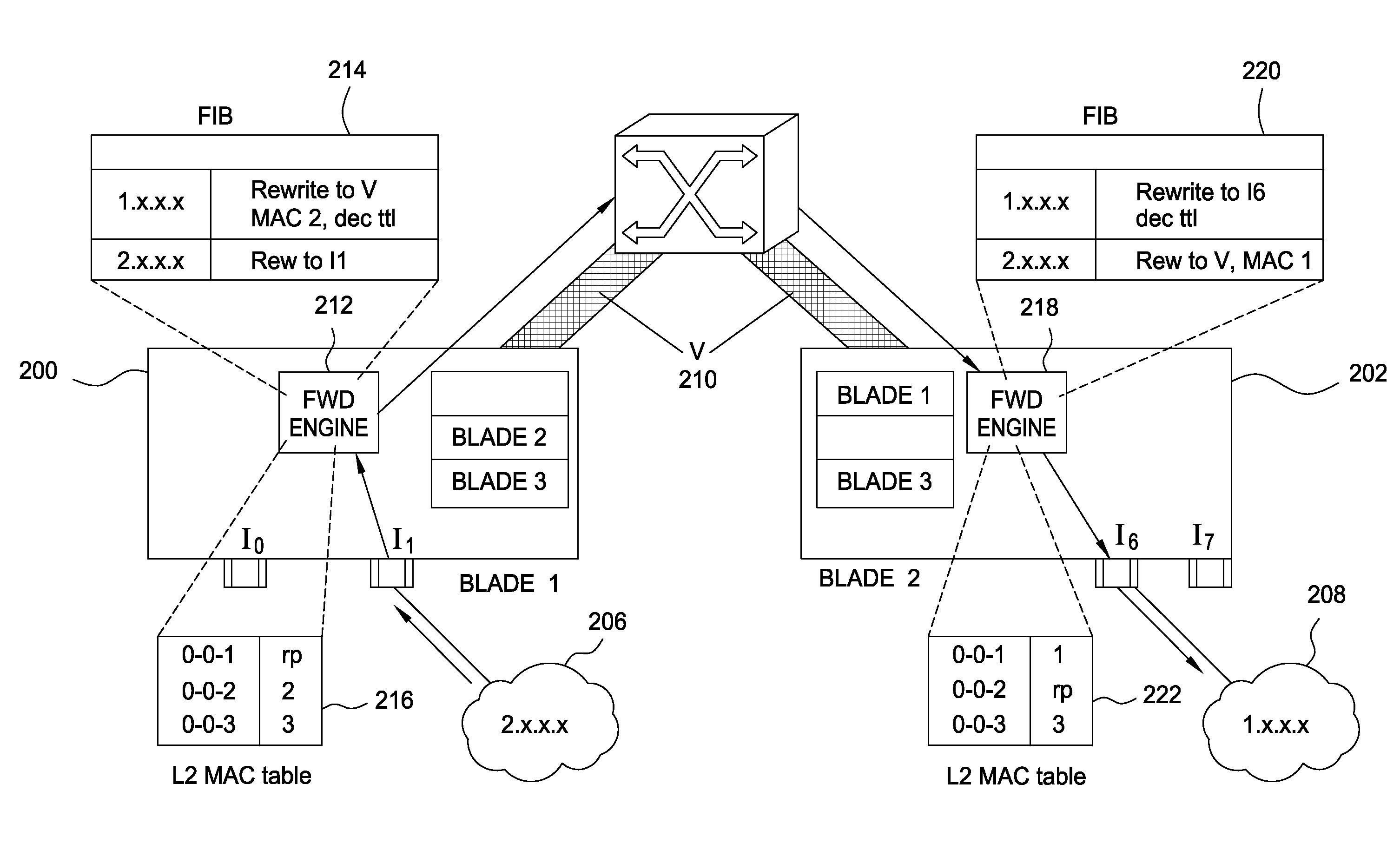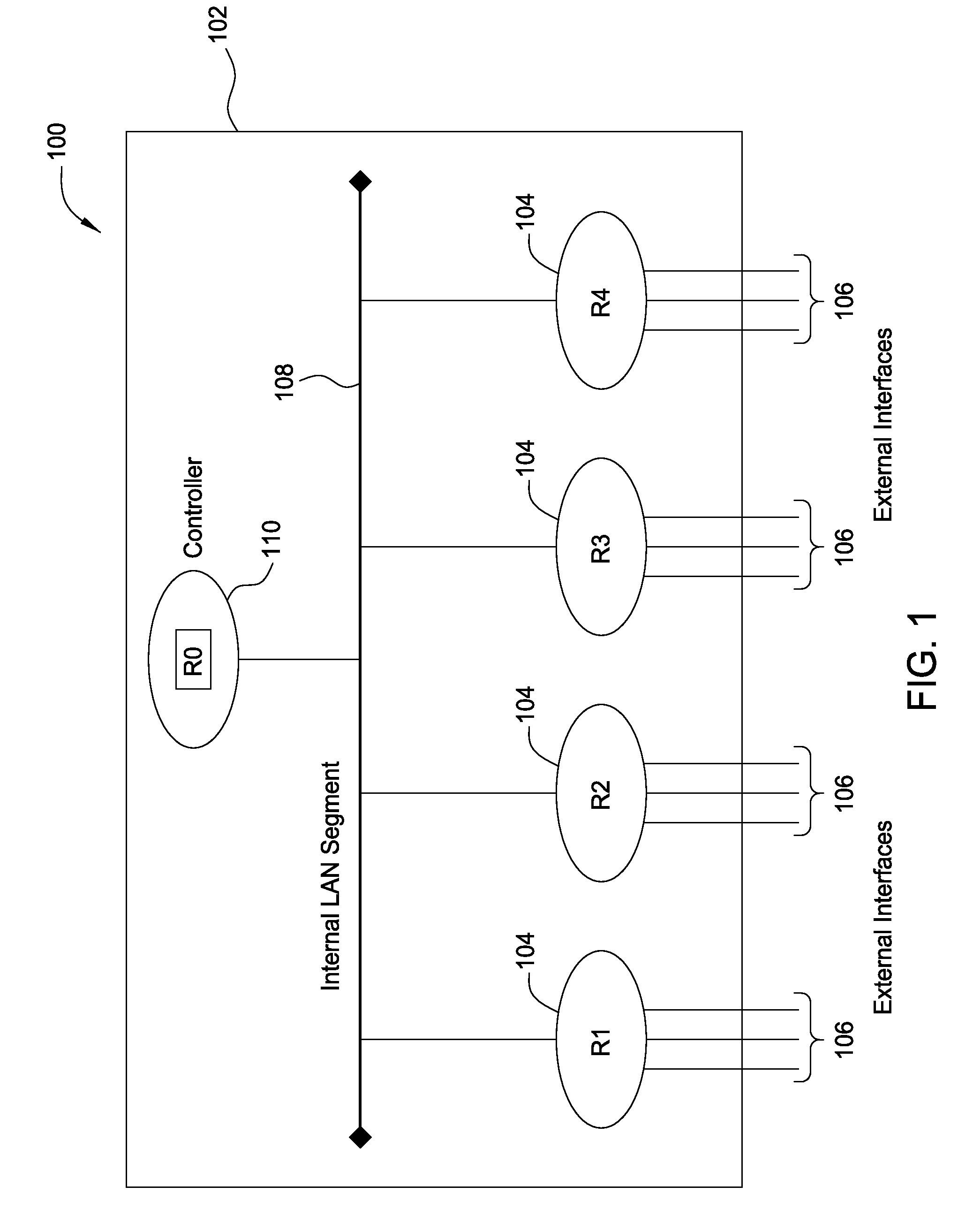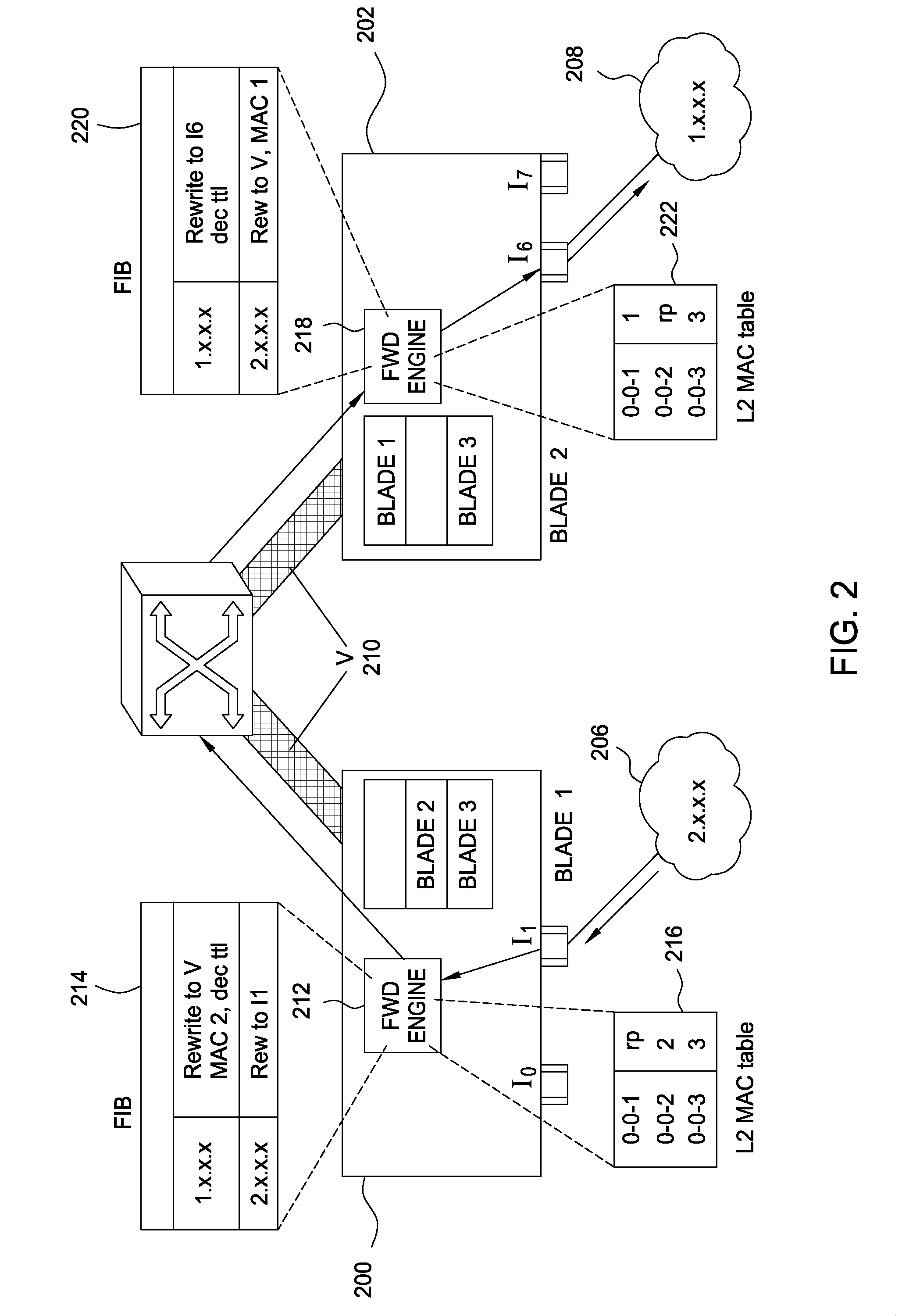Blade router with NAT support
a router and blade technology, applied in the field of network communication, can solve the problems of scalability in terms of the number of interfaces and associated operations supported by a single router, the inability to scale well in conventional routing systems that typically use a single operating system, and the inability to support multiple routers
- Summary
- Abstract
- Description
- Claims
- Application Information
AI Technical Summary
Benefits of technology
Problems solved by technology
Method used
Image
Examples
Embodiment Construction
[0017]Embodiments of the present invention provide a blade router to address interface scalability and permit an increased number of router linecards supported within a single chassis.
An Example Blade Router
[0018]FIG. 1 is a block diagram of an example blade router 100 according to an embodiment of the invention. The blade router 100 may comprise a chassis 102 having a backplane and a plurality of slots. Router linecards 104 (also known as router blades and labeled R1-R4 in FIG. 1) may be disposed in the slots of the chassis 102 and electrically coupled to the backplane. The number of slots may dictate the number of router linecards 104 the chassis 102 may hold. Although only four router linecards 104 are shown in FIG. 1, this is representative of any number of linecards that may be disposed within a blade router chassis (e.g., 44 or 128 linecards). Moreover, an operable blade router may have empty slots where the chassis 102 has more available slots than router linecards 104 used f...
PUM
 Login to View More
Login to View More Abstract
Description
Claims
Application Information
 Login to View More
Login to View More - R&D
- Intellectual Property
- Life Sciences
- Materials
- Tech Scout
- Unparalleled Data Quality
- Higher Quality Content
- 60% Fewer Hallucinations
Browse by: Latest US Patents, China's latest patents, Technical Efficacy Thesaurus, Application Domain, Technology Topic, Popular Technical Reports.
© 2025 PatSnap. All rights reserved.Legal|Privacy policy|Modern Slavery Act Transparency Statement|Sitemap|About US| Contact US: help@patsnap.com



